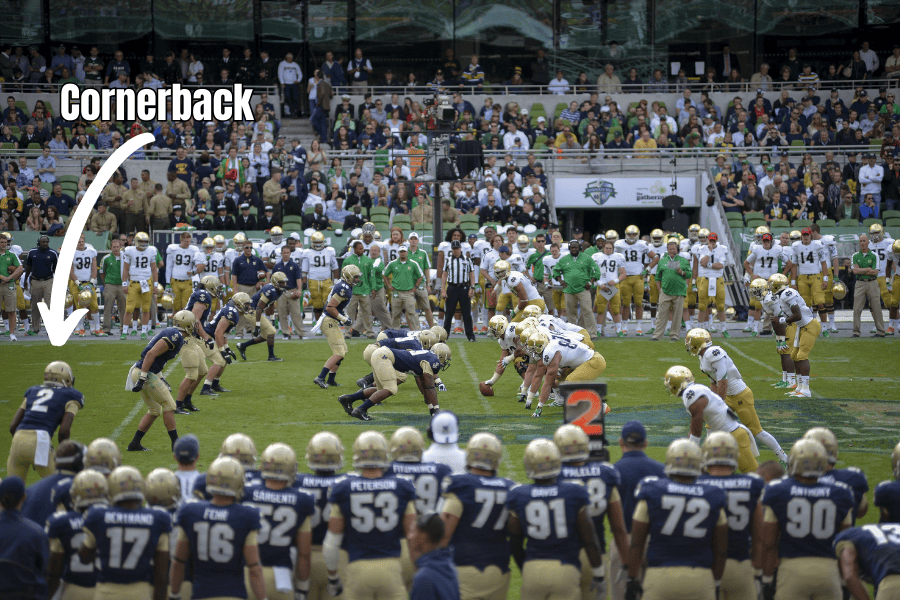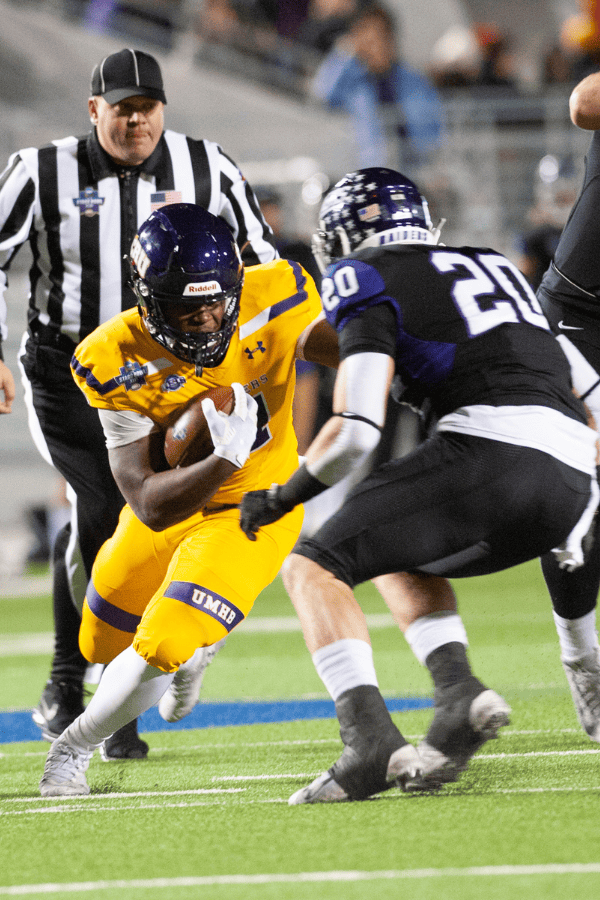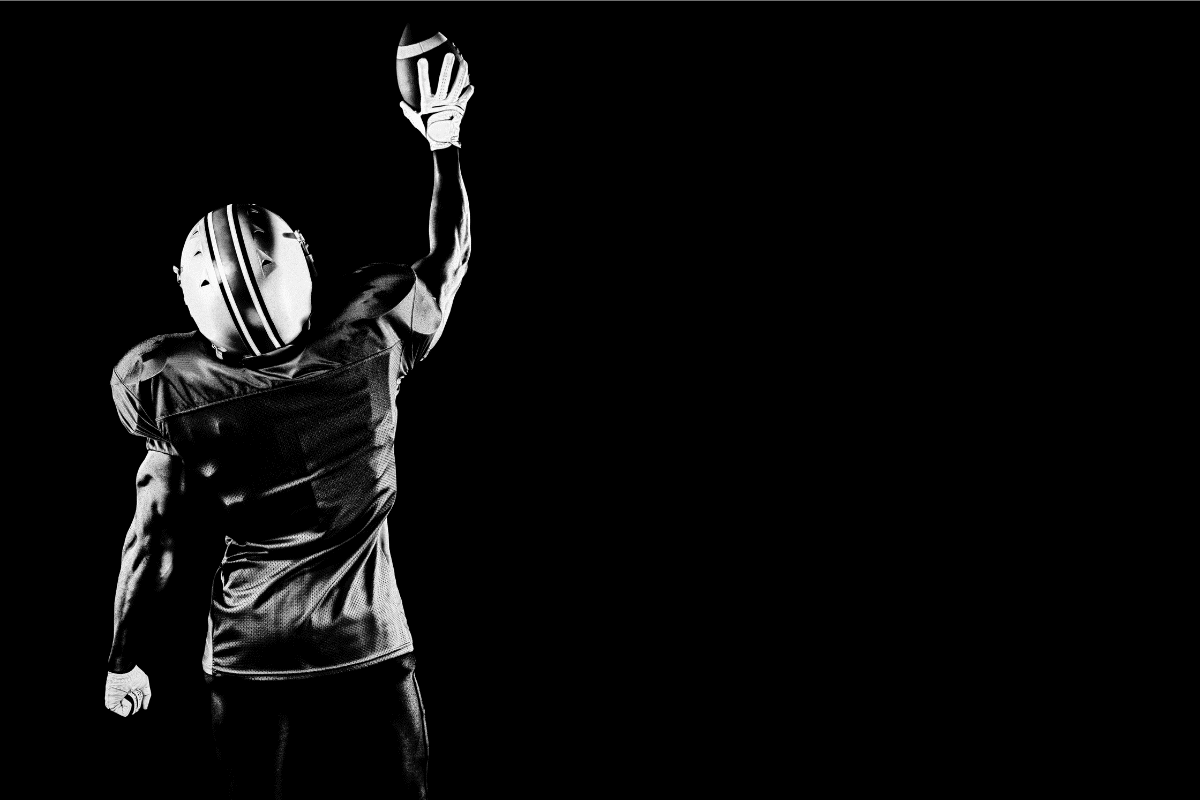What Does a Cornerback Do in Football?
One of the key positions on a football team is the cornerback. The cornerback is often one of the fastest players on the team, tasked with one of the most challenging jobs in the game – defending against the opposing team’s wide receivers.
As part of the secondary, alongside the safeties, cornerbacks are the last line of defense against the pass.
The role of the cornerback cannot be overstated. A good cornerback can deny an opposing receiver the ball, forcing the quarterback to rethink his strategy or even make costly mistakes. In a split second, a cornerback can also turn from defender to attacker, intercepting the ball and running it back for a touchdown.
Their ability to read the game, anticipate the offensive play, and react quickly and accurately can make the difference between a win and a loss. With all that in mind, it’s no surprise that the cornerback position is often filled by some of the most athletic and skilled players on the team.
Basics of Playing Cornerback
Let’s start with the basics – where the cornerback lines up, what their role is and what skills are necessary to play the position well.
On Field Alignment

The cornerback typically lines up on the outer edges of the defense, directly across from the offensive team’s wide receivers.
Depending on the defensive formation or the specific play called, a cornerback might line up directly across from a receiver (press coverage), or 5-10 yards off the line of scrimmage (off-man or zone coverage). The goal is to put the cornerback in the best possible position to defend against the pass or quickly adapt to a running play.
Role of the Cornerback on the Defense
Cornerbacks are a crucial part of the defensive team. Their main duty is to prevent opposing wide receivers from catching the ball. To achieve this, cornerbacks use a variety of techniques, including press coverage, off-man coverage, or zone coverage.
They must be versatile, able to quickly switch between aggressive and reactive play styles. Additionally, they are often called upon to tackle, either bringing down a receiver who has caught the ball or stopping a running play that has broken through the defensive line.
In certain situations, cornerbacks can also blitz the quarterback, adding an unexpected element to the pass rush.
Physical and Mental Attributes Needed to Play Cornerback
The cornerback position demands a unique combination of physical and mental attributes.
Physically, cornerbacks need speed and agility to keep up with wide receivers, who are often among the fastest players on the field. They require excellent hand-eye coordination to intercept or deflect passes, and they must be strong and solid tacklers.
Mentally, cornerbacks need a high football IQ. They must understand complex defensive schemes and quickly read and react to the offense’s formations and movements.
The mental fortitude to recover from negative plays is also vital as cornerbacks are often in high-pressure, high-visibility situations where a single mistake can lead to a significant gain or score for the opposing team.
It’s a position that requires not just athleticism, but resilience, strategic understanding, and a short memory for mistakes.
Key Responsibilities of a Cornerback
Now, let’s dive a little deeper into the cornerback’s role and responsibilities on the field.
Coverage

One of the primary responsibilities of a cornerback is to cover receivers, to prevent them from catching passes.
This coverage can take two main forms: man-to-man and zone.
These two strategies require different skills and approaches, and they can also be mixed within a single game, depending on the situation, the team’s defensive scheme, and the offensive opponent’s tendencies.
Man-to-Man Coverage
In man-to-man coverage, the cornerback is assigned a specific receiver to defend against for a particular play. The cornerback’s goal in this coverage style is to stick as closely as possible to the receiver, essentially ‘shadowing’ him wherever he moves on the field. This can involve a wide range of techniques and tactics.
At the line of scrimmage, the cornerback may engage in what’s called ‘press’ coverage, attempting to disrupt the receiver’s route by physically impeding his start. This requires great hand-eye coordination and timing, as the cornerback tries to react to the receiver’s movements without drawing a penalty.
As the play develops, the cornerback will need to quickly and accurately mirror the receiver’s route, using their speed and agility to stay in position. Ideally, the cornerback aims to position themselves between the receiver and the quarterback, making it more difficult for a successful pass to be completed.
Throughout all this, the cornerback must also keep their eyes on both the receiver and the quarterback, reading and reacting to any changes in the situation.
If the quarterback throws the ball towards the receiver they’re covering, the cornerback will attempt to ‘break up’ the pass by batting it away or intercepting it. This requires excellent hand-eye coordination and a good sense of timing, as they must make their move at just the right moment to avoid drawing a penalty for interference.
Man-to-man coverage is demanding, both physically and mentally, but it can be highly effective in neutralizing a key receiver and disrupting the offense’s plans.
Zone Coverage
In zone coverage, instead of shadowing a specific receiver (as in man-to-man coverage), cornerbacks are responsible for covering a designated area or ‘zone’ of the field. The field is typically divided into short, intermediate, and deep zones, and each zone could be further split between left, right, and middle.
In this strategy, the cornerback’s primary responsibility is to watch the quarterback and react to the pass. They need to keep track of any receivers entering their zone and be ready to defend against a pass in their direction. Cornerbacks will aim to either intercept the ball or to disrupt the receiver’s attempt to catch it.
Zone coverage requires excellent spatial awareness and a deep understanding of the game.
Cornerbacks must not only be aware of the receivers in their zone but also understand the bigger picture of the play as it unfolds. They need to anticipate where the quarterback is likely to throw the ball and react swiftly to ensure they’re in the right place at the right time.
Tackling

Tackling is another critical aspect of a cornerback’s duties. Whether it’s bringing down a receiver who has managed to catch a pass or stopping a running back who has broken through the defensive line, a cornerback must be an effective and reliable tackler.
Cornerbacks need to master the right techniques to bring down opponents safely and efficiently. They must aim for the midsection of the opponent, keep their head up, and wrap their arms around the opponent to bring him down.
They also need to be quick to read plays and react, as they may often be the last line of defense against an opponent making a big play.
Interceptions
Interceptions occur when a cornerback (or another defensive player) catches a pass intended for an offensive player. It’s one of the most impactful plays a cornerback can make, as it not only prevents the offense from completing a pass but also gives possession of the ball to the defense.
Cornerbacks must have excellent ball skills to intercept passes. This means they need good hand-eye coordination to catch the ball, plus the speed and agility to position themselves correctly.
Reading the quarterback’s eyes and body language, anticipating the trajectory of the throw, and understanding the routes receivers are likely to run all contribute to successful interceptions.
Legendary NFL Cornerbacks
The legacy and prominence of the cornerback position have been defined by several notable players throughout NFL history. Here are just a few:
- Deion Sanders: Often considered one of the greatest cornerbacks in the history of the NFL, Deion Sanders was known for his exceptional speed, athleticism, and ability to make big plays. Nicknamed “Prime Time,” Sanders played for several teams over his career, including the Atlanta Falcons, San Francisco 49ers, and Dallas Cowboys. He was a key contributor to two Super Bowl-winning teams (49ers in Super Bowl XXIX and Cowboys in Super Bowl XXX) and was named to the Pro Bowl eight times. Sanders was renowned for his ability to shut down an entire side of the field, known as a “shutdown” cornerback, and his ball skills led to him ranking 5th in career interceptions returned for touchdowns.
- Richard Sherman: Sherman is another modern great at the cornerback position, best known for his time with the Seattle Seahawks as part of their “Legion of Boom” defense. Sherman was an essential part of the Seahawks’ Super Bowl XLVIII win and is known for his ability to read plays and disrupt passes. He led the NFL in interceptions in 2013, and his high-profile style of play, combined with his outspoken nature, brought a renewed focus to the cornerback position.
- Darrelle Revis: Known as “Revis Island,” a term for his ability to isolate and shut down the opposing team’s best receiver, Darrelle Revis was a dominant force at the cornerback position for several teams, most notably the New York Jets. A seven-time Pro Bowler and Super Bowl champion with the New England Patriots (Super Bowl XLIX), Revis was known for his superb man-to-man coverage skills, essentially taking top receivers out of the game.
- Champ Bailey: Bailey is another highly celebrated cornerback, best known for his time with the Denver Broncos. Over his career, Bailey was selected to 12 Pro Bowls and was recognized for both his exceptional coverage skills and his willingness to tackle. He was a versatile player who excelled at both man-to-man and zone coverage and had a nose for the football, as shown by his 52 career interceptions.
These players have each left an indelible mark on the game of football. They have shown what is possible at the cornerback position and have raised the bar for the level of athleticism, intelligence, and skill required to excel in this critical defensive role.
Final Thoughts
The cornerback, an essential player in a football team’s defense, has a challenging and multi-faceted role on the field. They are tasked with preventing wide receivers from catching the ball by implementing a range of coverage strategies, including man-to-man and zone coverages.
They also must be proficient tacklers, preventing gains from both running and passing plays.
Finally, they can change the game on any given play with an interception, turning a defensive play into offensive opportunities.
These duties require a unique blend of physical attributes – speed, agility, hand-eye coordination – and mental qualities – quick decision-making, resilience, and a deep understanding of the game.

